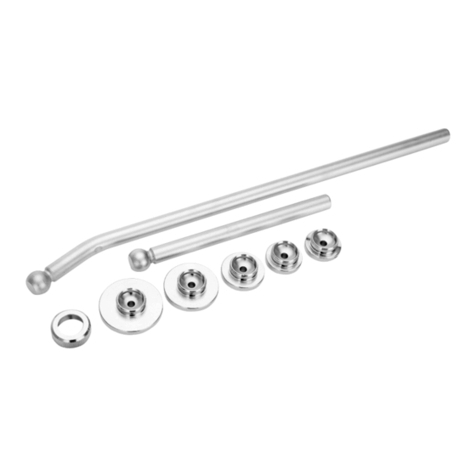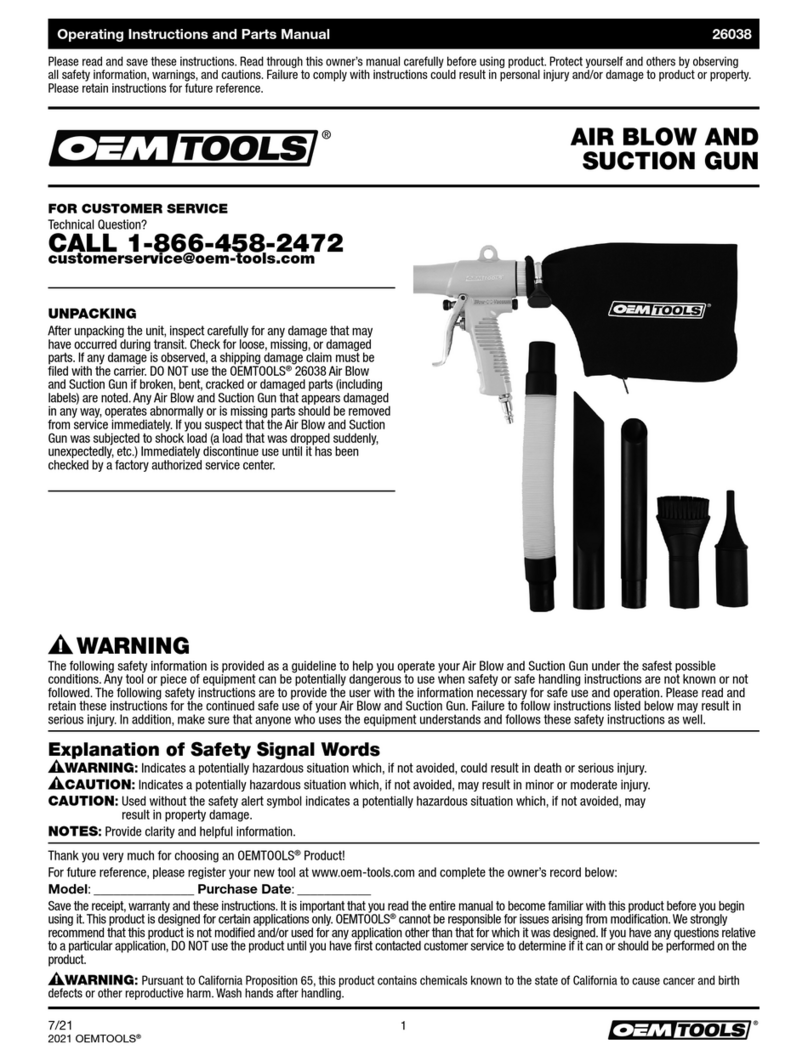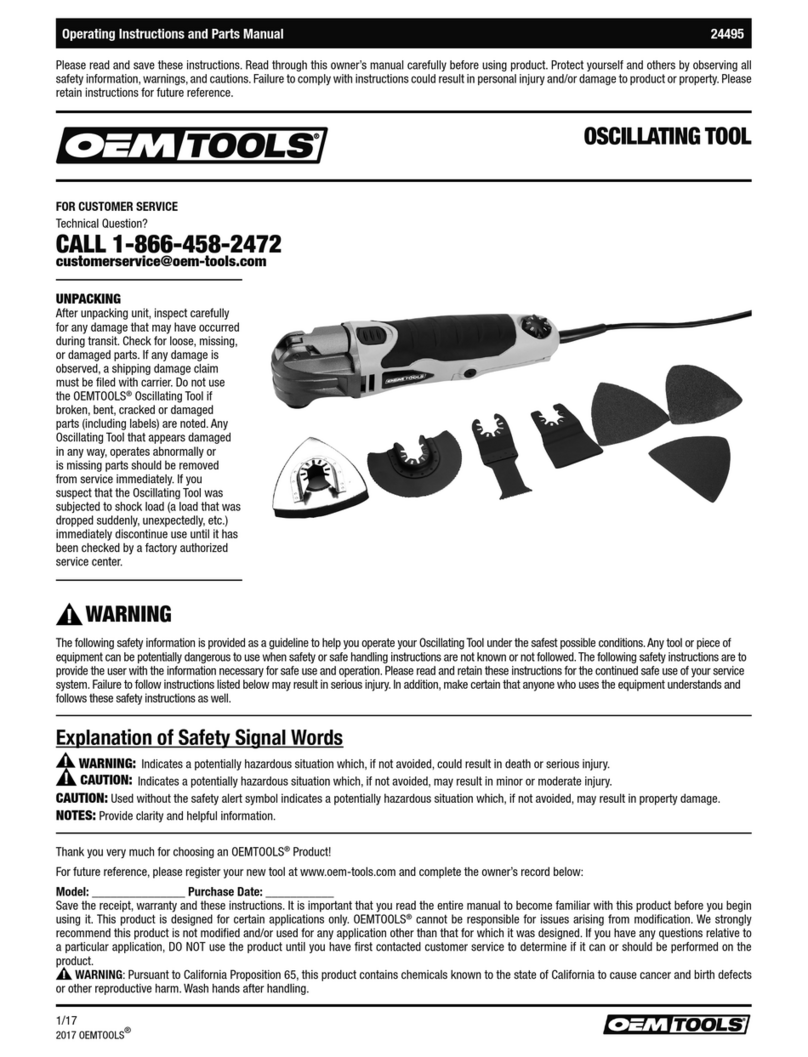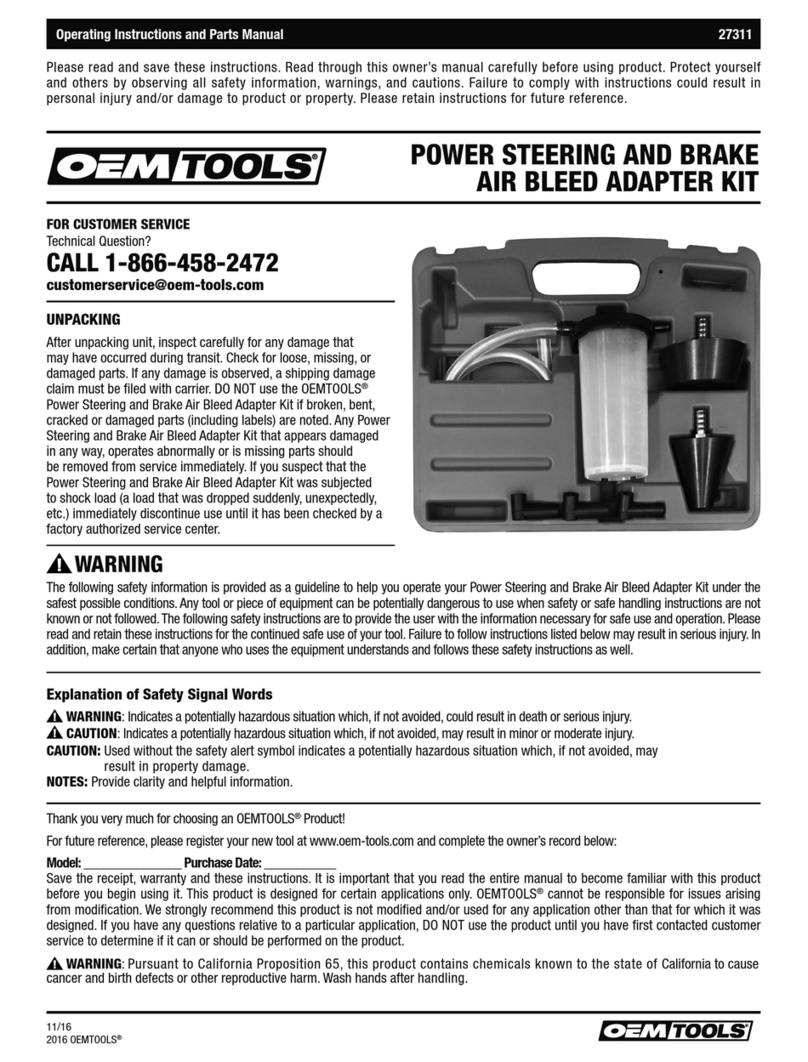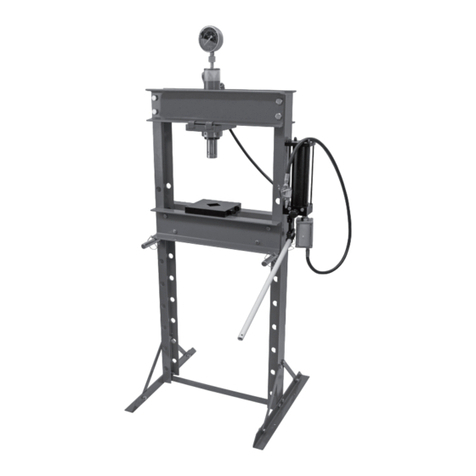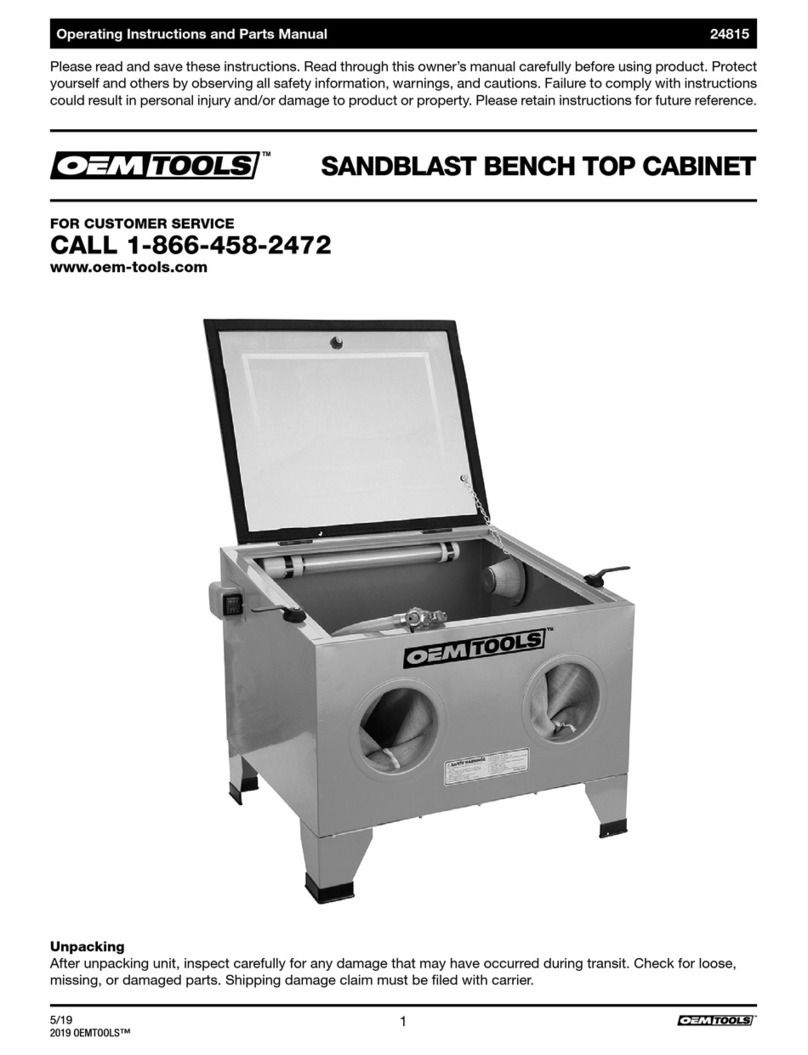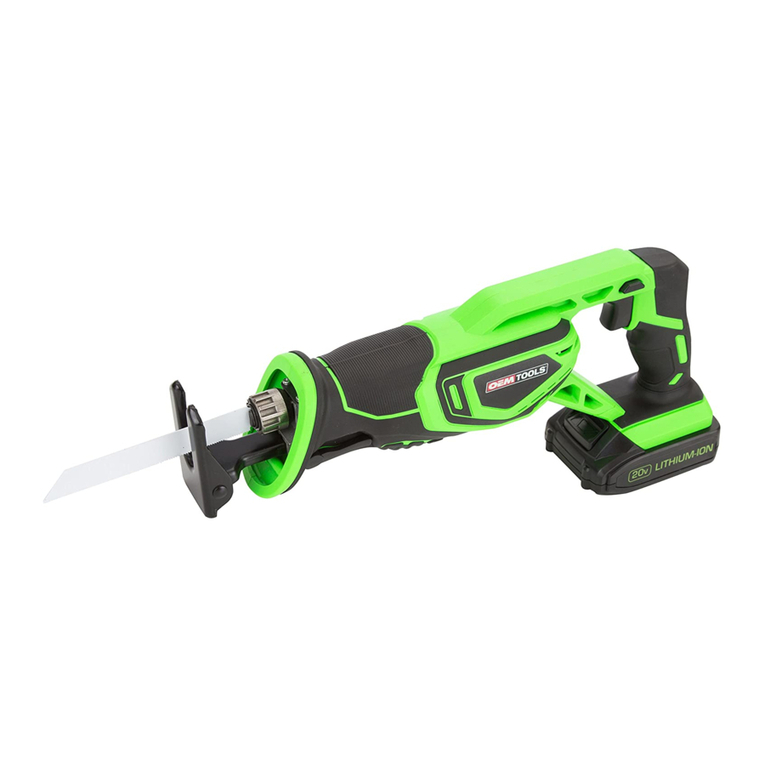
2
Operating Instructions and Parts Manual 24665
11/18
2018 OEMTOOLS™
HEAT GUN
POWER TOOL SAFETY
WARNING:Read and understand all instructions.
Failure to follow all instructions listed below may result in
electric shock, fire, and/or serious personal injury.
WORK AREA
1. Keep your work area clean and well lit. Cluttered
benches and dark areas invite accidents.
2. DO NOT operate power tools in potentially explosive
environments, such as in the presence of flammable
liquids, gas, or dust. Power tools create sparks which
may ignite the dust or fumes.
3. Keep bystanders, children and visitors away while
operating the tool. Distractions can cause you to
lose control.
ELECTRICAL SAFETY
1. Double insulated tools are equipped with a polarized
plug (one blade is wider than the other). This plug will fit
only one way in a polarized plug.
2. If the plug does not fit fully into the outlet, reverse the
plug. If it still does not fit, contact a qualified electrician
to install a polarized outlet. DO NOT alter the plug in
any way. Double insulation eliminates the need for the
three-prong grounded power cord and grounded power
supply system.
3. Avoid body contact with grounded surfaces such as
pipes, radiators, ranges, and refrigerators. There is
increased risk of electric shock if your body is grounded.
4. DO NOT expose power tools to rain or wet conditions.
Water entering the power tool will increase the risk of
electric shock.
5. DO NOT abuse the cord. Never use the cord to carry
the tool or pull the plug from an outlet. Keep cord away
from heat, oil, sharp edges, or moving parts. Replace
damaged cords immediately. Damaged cords increase
the risk of electric shock.
6.
When operating a power tool outdoors, use an outdoor
extension cord marked “W-A” or “W”. These cords are
rated for outdoor use and reduce the risk of electric shock.
7. When not in use, disconnect from the power source
and store in a safe, dry childproof location.
8. Avoid body contact with grounded surfaces such as
pipes, radiators, ranges, and refrigerators.
PERSONAL SAFETY
1. DO NOT operate power tools in explosive
atmospheres, such as in the presence of flammable
liquids, gases, or dust. Power tools create sparks
which may ignite the dust or fumes.
2. Stay alert, watch what you are doing, and use common
sense when operating a power tool. DO NOT use the
tool while tired or under the influence of drugs, alcohol
or medication. A moment of inattention while operating
power tools may result in serious personal injury.
3. Dress properly. DO NOT wear loose clothing or jewelry.
4. Wear approved safety eye/face shield, ear defenders
and hand protection.
5. Contain long hair. Keep your hair, clothing and gloves
away from moving parts. Loose clothing, jewelry or
long hair can be caught in moving parts.
6. DO NOT disassemble the Heat Gun. Take it to a
qualified professional when service or repair is required.
7. DO NOT use this Heat Gun for tasks it is not designed
to perform.
WARNING: To avoid fire or toxic reaction, never use
gasoline, naphtha, acetone, lacquer thinner, or similar
highly volatile solvents to clean the tool.
ASSEMBLY AND OPERATION
• Disconnect the plug from the power source before
making any adjustments, changing accessories or
storing the tool.
• To avoid electrical hazards, fire hazards, or damage to
the Heat Gun, use proper circuit protection.
• DO NOT abuse the cord. Never use the cord to carry
the tools or pull the plug from an outlet. Keep cord
away from heat, oil, sharp edges, or moving parts.
Replace damaged cords immediately.
NOTE:If air flow is blocked to nozzle, causing
overheating, the gun will turn off and come back on when
it has cooled. DO NOT leave gun unattended when it has
stopped, since it will restart and could cause fire or injury.
IMPORTANT SAFETY INSTRUCTIONS
The warnings, precautions, and instructions discussed
in this manual cannot cover all possible conditions and
situations that may occur. The operator must understand
that common sense and caution are factors which cannot
be built into this product, but must be supplied by the
operator.
WARNING: This product, when used for soldering and
similar applications, produces chemicals known to the
State of California to cause cancer and birth defects or
other reproductive harm.
TOOL USE AND CARE
1. Use clamps or another practical way to secure and
support the workpiece to a stable platform. Holding the
work by hand or against your body is unstable and may
lead to loss of control.
2. DO NOT force the tool. Use the correct tool for your
application. The correct tool will do the job better and
safer at the rate for which it was designed.
